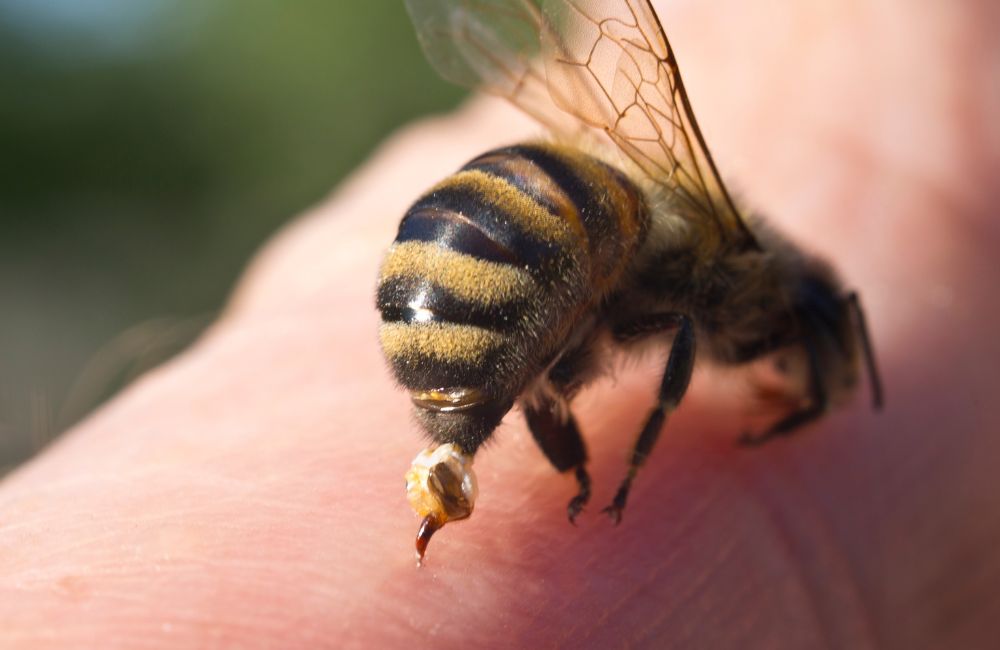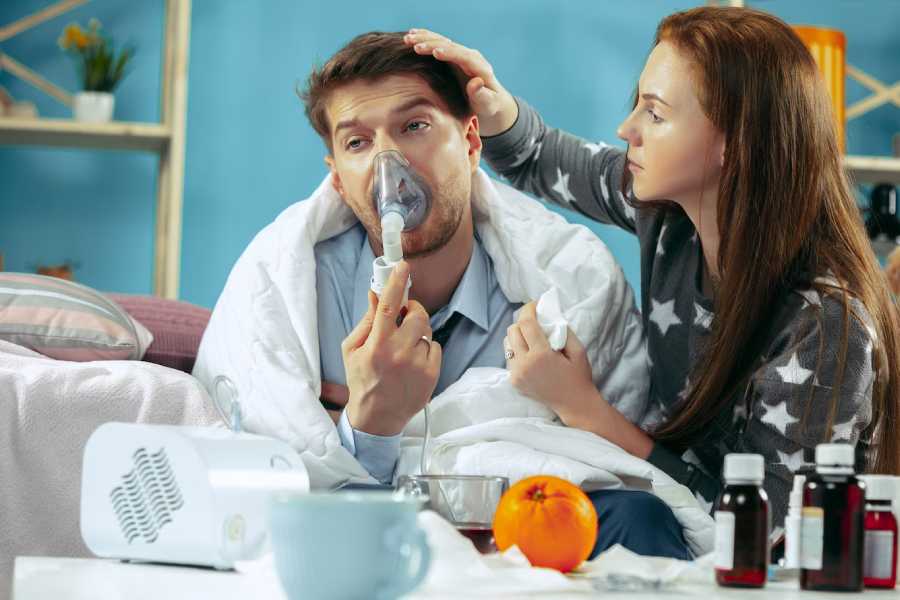
Bee sting allergies are common among children, especially in warmer months when outdoor activities are done more frequently. But while most bee stings are annoying, they can be potentially life-threatening, contributing to at least 40 deaths among children per year in the United States due to severe allergic reactions. When this happens, it’s important to know what to do and when to seek help from urgent care in Bridgeport, CT.
What Is a Bee Sting?
7 Essential First Aid Steps For a Child’s Bee Sting
Frequently Asked Questions on Bee Stings in Children

A bee sting is a sharp, often painful puncture made by a bee’s stinger. Bees release venom that can cause immediate pain and irritation when they sting. Understanding the type of bee and recognizing the differences between bee and wasp stings can help manage the reaction and decide whether to seek urgent care in Bridgeport, CT.
Bumble bees are larger, rounder, and furrier than other bees. They can sting multiple times without losing their stinger, which makes them a persistent threat if provoked. However, they are generally less aggressive.
Honey bees are smaller and less hairy than bumble bees, with a more pronounced waist. They are the most common type of bee that people encounter. A unique aspect of a honey bee’s sting is that its stinger is barbed and gets lodged in the skin, causing the bee to die after stinging as it leaves behind part of its abdomen and digestive tract, along with the stinger.
Carpenter bees are similar in size to bumble bees but have a smooth, shiny black abdomen. Unlike bumble bees, carpenter bees are solitary, and the females can sting multiple times. Their stings are painful but are rare since they are not aggressive unless directly handled.
Insect stings are very common. Knowing their differences is crucial, especially when a sting leads to severe allergic reactions. When this happens, seeking urgent care in Bridgeport, CT, is advisable so proper medication can be administered.
Below are ways to differentiate bee stings from wasp stings, according to urgent care in Bridgeport, CT:
Bee stings usually have a barbed stinger that remains in the skin. Conversely, wasps, which can sting multiple times, do not leave their stinger on the skin.
Bee stings often result in immediate sharp pain and a localized reaction (swelling, redness, and warmth). Wasp stings can be similarly painful but, due to the nature of their venom, often cause a more pronounced inflammatory response.
Bees are usually defensive creatures, stinging primarily for self-defense when their hive is threatened. Wasps can be more aggressive and are known to sting with little provocation.
Bee sting reactions are generally confined to the area around the sting. Wasp stings might lead to extensive swelling and heightened itching.
The first thing to do when your child gets stung by a bee is to stay calm. Children often react based on how their parents are reacting. Remaining calm helps them stay calm, too. Explain to them that bee stings can hurt, but the pain won’t last forever. Try using simple distractions to take their mind off the pain. You could talk about something fun you’ll do later or a favorite story. This helps reduce their anxiety, making it easier for you to handle the situation. If symptoms start to worsen, or if it’s your child’s first sting and you’re unsure how they’ll react, heading to an urgent care in Bridgeport, CT, might be necessary.
When a bee stings a child, it often leaves its stinger on the skin. Removing the stinger quickly is crucial because it stops more bee venom from entering the child’s body. Here’s how to do it properly:
The best way to remove a bee stinger is by using something with a flat edge, like a credit card or the back of a knife. Gently scrape it across the skin where the stinger is. This method is better than tweezers because squeezing the stinger can release more venom into the skin.
Aim to remove the stinger within 30 seconds of the sting. The quicker you remove the stinger, the less venom is injected, which can significantly reduce pain, swelling, and the severity of the reaction. If you cannot remove the sting, it is best to immediately visit an urgent care in Bridgeport, CT. The medical staff is trained to handle these situations, making removal and first aid more effective and immediate.
Once the stinger has been safely removed from your child’s skin, properly cleaning the sting area is the next critical step. This is vital to prevent any possible infection and to remove contaminants that could have entered the skin along with the stinger. Here’s a detailed breakdown of how to do this effectively, which is important if you are considering whether to visit urgent care in Bridgeport, CT, for further treatment:
When a child gets stung by a bee, applying a cold compress or an ice pack is a crucial step to manage the swelling and reduce the pain. This simple action can make a big difference in how your child feels.
The cold from the ice pack constricts blood vessels, slowing blood circulation to the sting area. This helps reduce swelling and numbs the area, decreasing pain. The sooner you apply the cold compress, the more effective it will ease the discomfort.
Wrap a few ice cubes in a thin towel or use a cold pack and gently apply it to the sting site. Never place ice directly on the skin, as this can cause frostbite, especially in children’s sensitive skin. Hold the ice pack on the affected area for 10 to 20 minutes. You can repeat this every hour as needed.
Administering the right over-the-counter (OTC) medication can help manage symptoms like pain and itching, which are common in children after a bee sting. Always check with a healthcare provider or a pharmacist at an urgent care in Bridgeport, CT, before giving any medication to ensure it’s suitable for your child’s age and health condition.
While ibuprofen and acetaminophen are effective options for pain and swelling, a study shows that ibuprofen is a safer and more effective choice for children than acetaminophen.
If the child is experiencing itching or mild allergic reactions, an antihistamine like diphenhydramine can be helpful. However, as per the product guidelines or a doctor’s advice, be mindful of the dosages and frequency of administration.
Always follow the instructions on the medication package or the advice given by healthcare professionals such as doctors in urgent care in Bridgeport, CT. This ensures the safety and effectiveness of the treatment. Use the measuring device with the medication to give the exact dose.
Suppose your child feels much pain from the bee sting, and you decide to give acetaminophen. You would check the bottle for the correct dose based on your child’s weight and age, measure it carefully, and give it to them with a glass of water.
If symptoms like difficulty breathing or severe swelling occur, immediately visit an urgent care in Bridgeport, CT. These could be signs of a more severe allergic reaction requiring professional medical attention.
When a child gets stung by a bee, it’s crucial to monitor them closely for any signs of an allergic reaction. This vigilance is essential because while most bee stings result in mild symptoms, such as localized pain and swelling, allergic reactions can escalate quickly and become life-threatening.
While many bee stings can be managed at home, there are situations where professional medical assistance is necessary. Knowing when to take your child to urgent care in Bridgeport, CT, can prevent complications and ensure swift treatment. Here are some conditions that warrant a visit to urgent care in Bridgeport, CT:

An infected bee sting can show signs like increased redness, swelling, or pus at the sting site several days after the incident. If you notice these symptoms in your child’s bee sting, it’s crucial to seek urgent care in Bridgeport, CT, to
prevent complications.
While a fever isn’t a common reaction to a bee sting, it can happen, especially if the sting site becomes infected. Monitor your child’s temperature, and if a fever develops, visit a pediatric urgent care provider such as DOCS Urgent Care & Primary Care – Bridgeport for a thorough evaluation.
Typically, bee sting reactions last a few hours to a few days and present mild symptoms like swelling and redness. Persistent or severe symptoms require attention from an urgent care provider in Bridgeport, CT.
After a bee sting, keep your child calm and avoid strenuous activities that might increase blood flow and spread the venom. If there are signs of an allergic reaction, promptly visit an urgent care in Bridgeport, CT.
Quick and effective care is crucial when your child suffers from a bee sting. DOCS Urgent Care & Primary Care – Bridgeport provides top-notch medical attention for all minor emergencies, including bee stings.
Our team of healthcare professionals is ready to assist with efficient, compassionate care that addresses your child’s immediate needs. It helps prevent complications for reliable and convenient urgent care DOCS Urgent Care & Primary Care – Bridgeport, CT.
Contact us today to learn more about our services or to schedule an appointment. Your child’s health and safety are our top priority.



During this surge in COVID-19 cases, our primary focus is meeting the high demand for tests, and we are seeing higher than usual wait times. This means we are unable to answer most phone calls. Please know that our teams are working very hard during this time to care for as many patients as safely as possible. Please click the button below for answers to common questions. We appreciate your understanding.